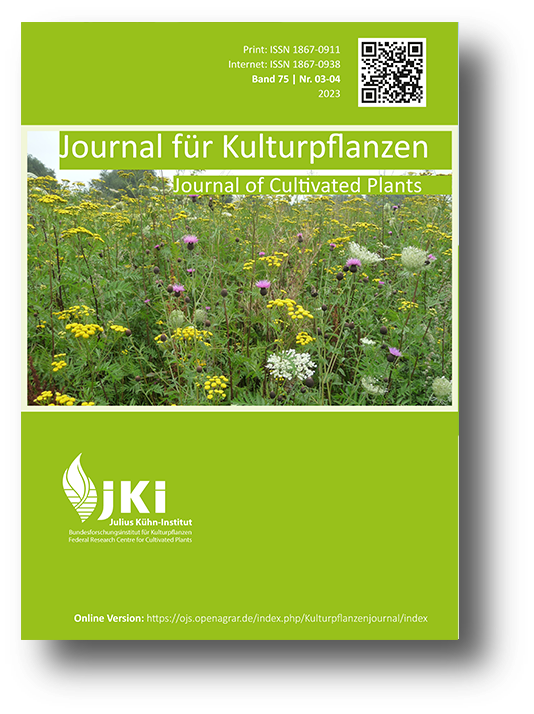Effect of intercrop cultivation in maize stands on arthropods biomasses and diversity
DOI:
https://doi.org/10.5073/JfK.2023.03-04.03Keywords:
catch crop-growing, biodiversity, arthropods, food web, energy flow, agricultural intensityAbstract
In a field trial, agronomic and crop effects of six intercrop mixtures and control (without catch crop) were investigated in maize cultivation. Additionally, the arthropod fauna was recorded with ground traps on in three dates in 2020 (10.-17.7.; 17.8. – 24.8.; 14.9. – 17.9.). The experimental objective was to verify whether the plant biomass remaining on the field (dt DM/ha) and its energy content (GJ/ha) have an impact on the diversity (Shannon-Weaner index) of the arthropod community and its biomass. It was found that the diversity of arthropod community differed significantly between some variants. However, the differences could not be explained by the introduced plant biomass and energy or other factors (number of plant species in the seed mixture, winter hardiness of the catch crops etc.). However, arthropod biomass increased as plant biomass and energy input increased. The result is consistent with literature findings on food web energy transfer and differential resource use by arthropod species. Similarly, the result is discussed in the context of policy approaches to promote insect conservation.
Downloads
Published
Issue
Section
License
Copyright (c) 2023 Wolfgang Heyer, Franziska Becker, Paula Fuchs, Jan Rücknagel

This work is licensed under a Creative Commons Attribution 4.0 International License.
The content of the journal is licensed under the Creative Commons Attribution 4.0 License. Any user is free to share and adapt (remix, transform, build upon) the content as long as the original publication is attributed (authors, title, year, journal, issue, pages).
The copyright of the published work remains with the authors. The authors grant the Journal of Cultivated Plants, the Julius Kühn-Institut and the OpenAgrar repository the non-exclusive right to distribute and exploit the work.







